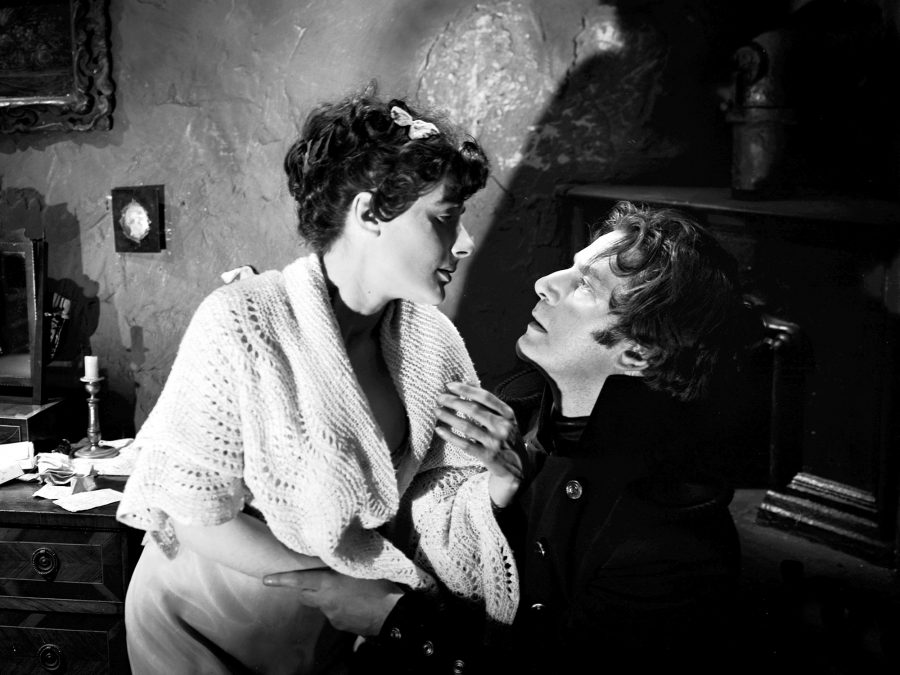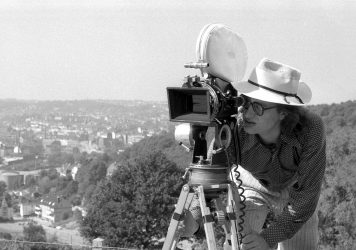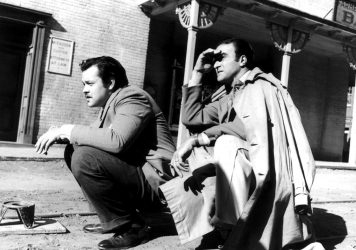
Thorold Dickinson’s 1949 The Queen of Spades is the perfect winter ghost story. Based on Alexander Pushkin’s classic short story, the slim, sharp tale follows a young officer through shadowy streets, grand mansions, and seedy taverns as he seeks a devilish secret to win at cards.
Over time though, 35mm prints and magnetic soundtracks degrade, even for films kept in relatively prestine storage. Digital restoration is a key new tool in addressing logistic challenges of film preservation and archive creation. John Rodden, Head of Film Entertainment at StudioCanal, and Jahanzeb Hayat, StudioCanal’s Technical Manager for Theatrical Restorations, explain the meticulous process and responsibilities of 4K restoration.
LWL: Why restore The Queen of Spades in 4K now?
John Rodden: For us, it’s always been a favourite. It’s one of those British films that we think resonates and is worthy of an audience. Even if you haven’t seen it, you will have seen its influence.
Our work is about raising the profile of prestige films.The best way to do that is to showcase films in the way they were intended to be seen, on the big screen. We encourage people to see The Queen of Spades in a cinema with an audience if possible. But it’s also great at home, so we’re presenting it in January as part of our Vintage Classics Collection, as well as a collector’s edition with bonus content.
4K technology can present films better than ever in a cinema and then in the home. It’s sometimes surprising how good films look when restored. The materials Dickinson shot on were great. He was working with incredible equipment and lenses. 35mm film was and is an amazing medium to record imagery. 4K technology brings all the detail out – in a black and white film the dynamic range of greys and blacks.
Can you walk us through the film’s restoration process?
Jahanzeb Hayat: The BFI held the original nitrate negatives and gave them a physical clean. Then we brought them to our restoration company Silver Salt, who scanned the film into 4K digital files with all the information in the image present. Then it went through hundreds of hours of manual cleaning. We went through the film frame by frame, removing sparkles (dirt), and worked on scratches one at a time. We stabilised the image so it’s not shaking; it stays true from shot to shot. And then we used references like older masters and 35mm prints to make sure it’s as accurate as possible for the colour grade. Lastly, we made a 4K DCP for theatrical screenings and a new HD Master for home entertainment.
The Queen of Spades is in black and white, with vivid contrast between shadows and snow. Are there particular challenges when restoring black and white films as opposed to colour films?
JH: The biggest challenge is black levels and maintaining information on the darker side of the image. You don’t want noisy shadows. When we scan it in 4K 16 bit, we create a log scan. This takes the entire dynamic range and information in the image and presents it so that the colour grader can work with it all. It’s definitely about the balance and noise levels when it comes to contrast in black and white.
You mentioned the snow. When you see dirt – which we call sparkles – on film, it is literally like tiny bits of snow. When we start to clean a film, we do a digital scan where the computer goes through and cleans up surface level information before we go through each frame manually. When it comes to snow, you can’t do that, so Silver Salt had to work manually in many scenes.

Compared to other restorations, were these prints for The Queen of Spades challenging?
JH: Compared to other films over 50 years old, it wasn’t in the worst condition – dirty, but as expected. A few sections were scratched, but nothing that stood out. The BFI kept it in good condition in their storage. You have to be gentle and careful when film prints go through a feeding or scanning machine so the holes and pins line up, especially when rolls have been joined together.
What’s the importance of film storage for future restoration and digitisation?
JH: One important aspect of preservation is the metal cans reels are kept in. Over years they can rust and the chemicals from the film damage the cans. So it’s important to re-can film reels to keep them in good condition. Sometimes when film degrades in terms of the image, we are able to bring it back with colour grading.
When we finish restoring a film, we take the full case scans created at the first stage and archive them onto secure LTO tapes, which we put in storage. If God forbid anything happens to the negative, we can use those. There have been times where we’ve restored a film, perhaps 10 years ago when HDR 4k wasn’t as prevalent, and we’ve gone back to that data and created an HDR Dolby Vision remaster without using the more fragile negative.
We also have an entire storage facility of magnetic soundtracks. Magnetic soundtracks can physically degrade easily and severely, so we’ve been working to scan and upload the audio onto our secure media asset management system so we have a good copy before anything happens to the track negatives.
Film preservation is a big topic; streamers treat original films carelessly but digital is a large-scale archival tool to combat physical archives’ limitations. How do you see digital technology’s role in giving films a new life for new generations?
JR: We are conscious of our role as archive custodians. It’s always important we create a preservation master from a 4K scan. We can then go back and create a 35mm safety negative.
The other aspect is preserving the film in the collective culture. It’s not enough to restore a film, people have to see it. We’re in a world of myriad ways of accessing content across all media. The job is to be as active as possible across all different areas now and in the future. We have to think about buyers to reach audiences who may not actually know our catalogue, so there’s the job of explaining, championing, and curating. All these activities are about preserving cultural artifacts in the public imagination.
What do you want people to take away from the restored Queen of Spades?
JR: I hope people enjoy themselves and appreciate that art is long. We’re talking about The Queen of Spades today because it’s a great work and genre piece on many levels. The ghost story is a meditation on greed, ambition, and resentment. In 4K, it’s like seeing a restored painting brought back to life.
We want to take people on a journey. We’re lucky custodians. We’re the kids in the candy store, but we have to be aware of our responsibility to protect the works and get them out to a wide audience.
StudioCanal and the BFI’s restoration of The Queen of Spades is in cinemas on 23 December and on home video on 23 January.
Published 21 Dec 2022

The German multi-hyphenate on how he’s future-proofing classics like Wings of Desire and Paris, Texas.

Lost scenes from the director’s ill-fated second feature are being reconstructed with animation.

The BFI’s vast archive of early cinema is available to watch online for free.